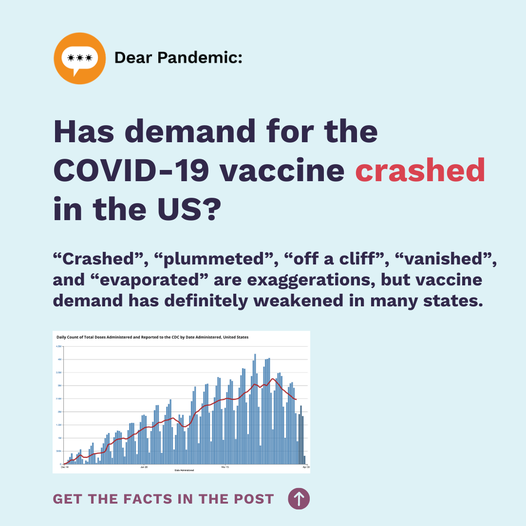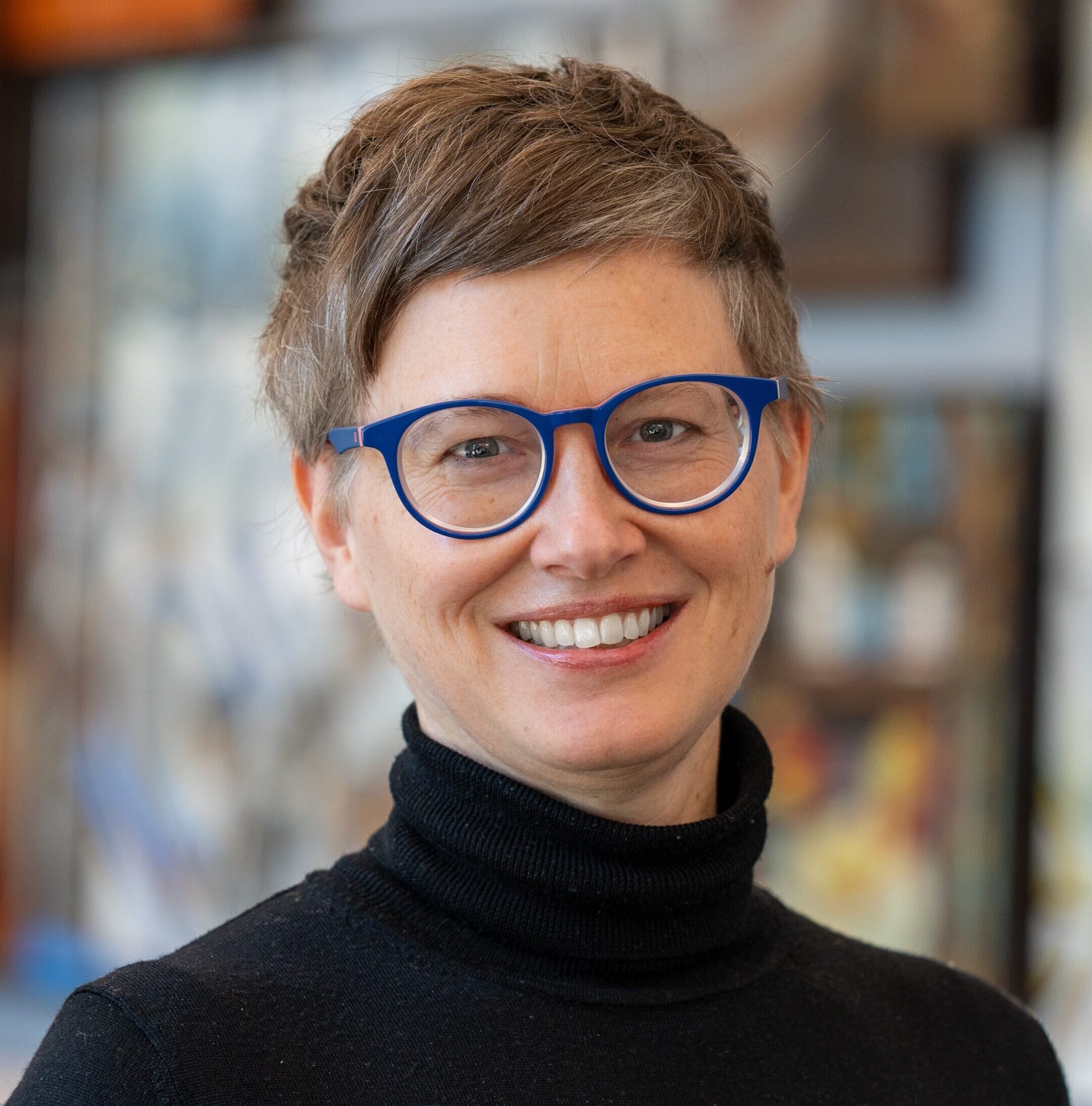A: “Crashed”, “plummeted”, “off a cliff”, “vanished”, and “evaporated” are exaggerations, but vaccine demand has definitely weakened in many states.
As Cynthia Cox, VP at Kaiser Family Foundation, put it recently: “Good news: In the next month, everyone who wants a vaccine will have gotten one. Bad news: In the next month, everyone who wants a vaccine will have gotten one.”
Whether you’re a vaccine hunter, a vaccination provider, or just an obsessive tracker of vaccination statistics (👋), you’ve probably noticed something in the past few weeks: Vaccine appointments are a whole lot easier to get, vaccine clinics are whole lot less busy, and number of vaccine doses administered per day is trending decidedly down.
In the US as a whole, over 240,000,000 (that’s 240 million) doses have been administered, with 55% of the US population 18 or older having gotten at least one dose, and 39% of the 18+ population fully vaccinated. (Those coverage stats are even better for 65+: 82% one dose, 69% fully vaccinated).
But while the US continued to vaccinate a lot of people (about 2 million doses per day right now), that number is noticeably lower than it was a few weeks ago. The US record (to date) for number of doses given in a single day was 4.2 million on April 1.
And while every state and county looks a little different, you can see that same pattern of weakening demand in many places:
Texas also peaked in early April at 1.8 million doses per week, and is now under 1 million.
Michigan (which has had a horrendous COVID-19 outbreak) peaked around April 10 at 914,000 doses. That number has gone down, but not as steeply as the US overall.
Philadelphia had three weeks in late March/early April where the daily average was around 18,000-20,000 doses administered; that’s now well below 10,000 doses.
The media is full of stories of vaccination clinics now begging people to come get their shot before doses expire, and clinic volunteers report “ghost town” vibes.
One question you might be asking yourself: Is any of this because of the pause and restart of the Johnson & Johnson vaccine? While the J&J pause did take that option off the table for almost two weeks in late April, and there have been some reports of sluggish demand for that specific vaccine since its restart, changes in J&J vaccine administration alone can’t account for the recent drop off in doses delivered.
So what does this mean? Is vaccine coverage in the US going to be stuck at around 50%? Probably not. Public health departments, health systems, medical providers and employers are still working hard to ensure that everyone is reached with an offer of a free vaccine. Vaccine promotion efforts continue, as do programs to reach the most vulnerable populations.
Vaccination programs recognize that the next phase of vaccine roll-out in the US will look different. Expect to see:
Fewer mass clinics, more micro clinics.
Fewer broad media campaigns, more targeted campaigns
.
COVID-19 vaccines being offered in primary care settings.
Do you see less demand for the vaccine in your area or among your friends and family? Are vaccine appointments going begging? Tell us below what’s going on where you are!
Links:
AP story on drop in vaccine demand



